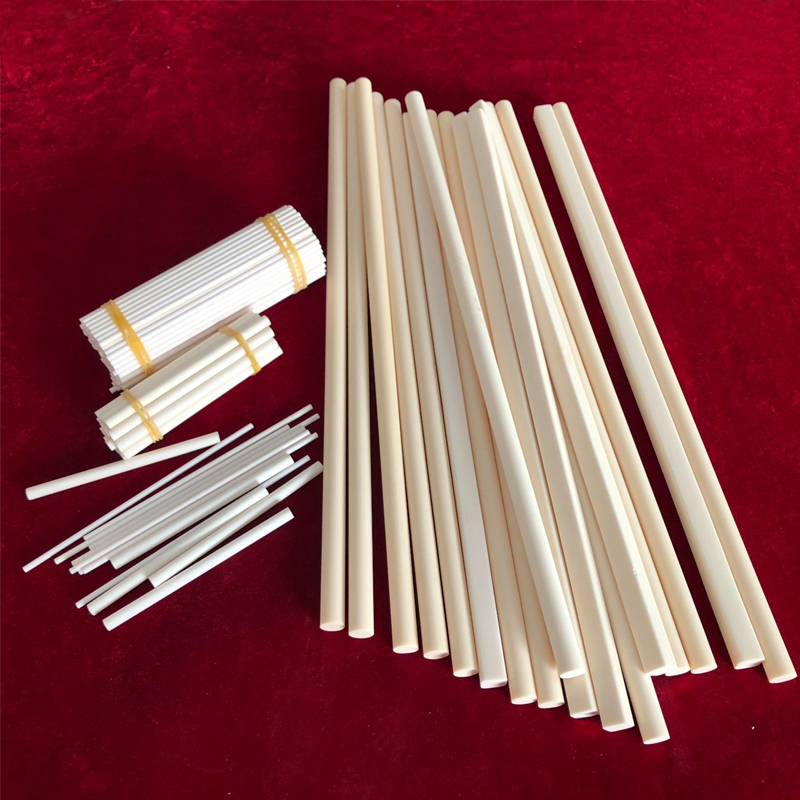Decoding the Properties of Alumina Ceramic Rods in Industrial Fields and Daily Life Scenarios
In the field of materials science, alumina ceramic rods may seem ordinary, but in fact, they play an irreplaceable role in numerous fields by virtue of their outstanding properties. Next, let's step into their wonderful world together.

1. Alumina Ceramic Rods
Alumina ceramic rods take alumina as the main raw material, and usually adopt high-performance α-Al₂O₃. Through complex forming processes such as injection molding, die pressing, isostatic pressing and slip casting, followed by high-temperature sintering, powdered alumina is turned into ceramic rods with hard texture and excellent performance.
2. Outstanding Properties: Ultra-High Hardness and Wear Resistance
Its Rockwell hardness can reach HRA80, second only to diamond and far exceeding that of ordinary steel and stainless steel. In industrial scenarios with high wear resistance requirements, such as textile machinery, when it is used to replace traditional stainless steel shafts, the service life of the product can be increased by more than 10 times, significantly reducing equipment maintenance costs.
High temperature resistance
It has a high melting point and excellent thermal stability. In industries such as high-temperature industrial kilns and glass manufacturing, it can work stably in high-temperature environments. For example, when used to stir molten glass in glass manufacturing, it does not deform or get damaged.
Strong chemical stability
It has good corrosion resistance, is insoluble in water, and remains stable in most chemical reagents. Although it is slightly soluble in strong acids and alkaline solutions, its corrosion resistance is excellent compared with other materials. In the chemical industry, it is often made into acid-resistant pump impellers, pipeline linings, and other components to resist the erosion of chemical substances.
Good electrical insulation
It is an excellent electrical insulator, and its electrical resistance increases with the increase of purity. In the field of electronics and electrical appliances, it can be made into insulating devices with a voltage range of 1kV - 110kV, which can effectively isolate electric current. It has low loss in high-frequency environments and excellent high-frequency insulation performance.
Low density and light weight
Its density is only 3.5g/cm³, approximately half that of steel. In fields such as aerospace where equipment weight is a requirement, using it to manufacture components can reduce the overall weight of the equipment while ensuring strength and performance.
3. Widely used in the industrial field
In the metal processing industry, its high hardness, wear resistance, and thermal conductivity make it a capable assistant in cutting, welding, and grinding processes. In the electronics industry, it can be used to manufacture components for semiconductor processing equipment and pins for circuit board components, meeting the requirements for high-precision processing and electrical insulation.
4. Development History
In the early days, ceramics were mostly used for daily necessities and decorative items. With the advancement of science and technology, people began to research and improve ceramic materials. At the beginning of the 20th century, attempts were made to apply alumina ceramics in industry; however, due to technical limitations, their performance was incomplete and their application scope was limited. Later, the emergence of new forming and sintering technologies improved their performance. In the medical field, after years of research and clinical trials—from animal experiments to human applications—alumina ceramics have now become an important biomaterial, and their application fields are still constantly expanding, such as in the fields of new energy and environmental protection.
5. Selection guide: Choose type based on usage
Pay attention to quality
Test the hardness with professional instruments to see if it meets the standards; measure the density, which should generally be around 3.5g/cm³; check the appearance for cracks and air holes; you can also ask the manufacturer to provide a quality inspection report.
Choose reputable manufacturers and suppliers
Regular manufacturers are equipped with advanced equipment, possess professional technology, and have sound quality control systems. You can conduct a comprehensive evaluation by checking their qualifications, customer reviews, etc., and pay attention to verifying their relevant production licenses and certification certificates.

